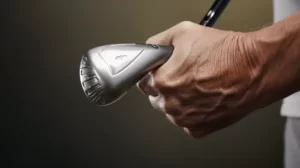Sudden stiffness and pain can strike any time, any place, anywhere on the body. But you don’t have to suffer without fighting back. The key to quick pain relief: Release the tightness and stretch painful muscles to bring fresh blood to the area and restore the range of motion. All you will need is a few simple stretches.
Common Pain
Among the most common pain spots on the body are the chest, shoulders, and upper back. You know this pain all too well, and you see others experiencing it too. It seems like when one of these areas gets tight, the others follow suit.
Pain can arrive in the form of nagging shoulder pain, neck pain, pain behind the shoulder blades, pain in the chest and, soon, headaches. Anti-inflammatories or analgesics are OK in a pinch. Massage and chiropractic are good too. The best bet, however, is to release the stiffness before it gets worse and pain sets in.
Neck, chest, and shoulder stiffness usually come from poor posture and stress. Often people are hunched over their desks on a computer all day, and this elongates the muscles in the shoulder while compressing the muscles in the chest. When your muscles are all jammed up, they hurt. No worries: When you’re in a jam, use the jamb to release the pain.
The door jamb, that is.
Feel Your Pain
The first thing to do when experiencing shoulder, chest, and upper back stiffness or pain is to try and feel it. This lets you better understand the tightness and where it originates.
If your neck hurts but not your shoulders, for example, then the pain may be from sleeping in an uncomfortable position. If your shoulders hurt, it could be from sleeping with your arm above your head or from stress. Additionally, the shoulders could be tightening because of shortened chest muscles, or pecs. These get short or contracted when the arms are held close in front of the body for extended periods of time when typing, writing, driving, or reading. Postural and behavioral changes go a long way to prevent the tightness and pain from returning.
When the chest muscles tighten, they cause your shoulders to round forward. This gives you what personal trainers often call “turtle back.” This just means your upper back and shoulders are hunched forward, which causes pain as they keep your chest muscles in a constant state of tightness or contraction and your shoulders in an extended position. This makes your shoulders contract in an effort to pull them back to a normal position. The prolonged contraction leads to trigger points, those nasty knots you feel in your shoulders. They are painful.
Painful Dilemma
When experiencing chronic shoulder, chest, and upper back pain, many grab for NSAIDs (non-steroidal anti-inflammatory drugs), hot compresses and showers, chiropractic adjustments, and acupuncture. Others opt for massage and some even go so far as to get physical therapy. The best advice I can give on any pain issue is to start low-tech and try the least invasive approach first. Often times, the simplest thing is the fastest solution.
In this case, it’s stretching in a doorway. Here are five ways you can do it:
Doorway Stretch One:
- Stand with feet parallel and just behind the doorway.
- Place your right forearm against the doorway frame. Make sure your arm is held at a 90-degree angle with palm flat against the jamb.
- Step forward with your right foot through to the other side of the doorway. Do not move your arm. You should feel a nice stretch across your right pectoral (chest) muscle. Hold for 20 seconds.
- If it is too painful to hold this position, take a shorter step forward.
- If you do not feel the stretch, then turn your torso toward the left while keeping everything else in place.
- After 20 seconds return to the starting position by stepping back with your right foot.
- Repeat on the left side.
Doorway Stretch Two:
- Stand with feet parallel and just behind the doorway.
- Place your right forearm against the doorway frame. Make sure your arm is held at a 120-degree angle with palm flat against the jamb.
- Step forward with your right foot through to the other side of the doorway. Do not move your arm. You should feel a nice stretch across your right pectoral (chest) muscle. Hold for 20 seconds.
- If it is too painful to hold this position, take a shorter step forward.
- If you do not feel the stretch, then turn your torso toward the left while keeping everything else in place.
- After 20 seconds return to the starting position by stepping back with your right foot.
- Repeat on the left side.
Doorway Stretch Three:
- Stand with feet parallel and just behind the doorway. Or, if you are too tall to allow a full arm extension toward the top of the doorway, kneel behind the doorway.
- Place your right forearm against the inside of the doorway frame.
- Slowly slide your arm up along the inside of the doorway frame. You should feel a nice stretch across your right pectoral (chest) muscle and around your shoulders and rotators.
- If you do not feel the stretch, lean slightly forward and that should do the trick.
- Hold for 20 seconds then return to the starting position by slowly sliding your arm back down the frame.
- Repeat on the left side.
Doorway Stretch Four:
- Stand with feet parallel and just behind the doorway.
- Place the palms of both hands flat on the back of the jamb, forearms held parallel to the floor.
- Slowly allow your upper body to lean forward and hold for 20 seconds. You should feel a stretch across your chest, along your ribs and/or between your shoulder blades.
- After 20 seconds return to the starting position. This is the warm-up for the next stretch.
Doorway Stretch Five:
- Stand with feet parallel and just behind the doorway.
- Place your forearms flat along the back of the jamb, triceps held parallel to the floor.
- Slowly allow your upper body to lean forward and hold for 20 seconds. You should feel a stretch across your chest, along your ribs and/or between your shoulder blades.
- After 20 seconds return to the starting position.
There are many ways a door jamb can be used to stretch the upper and lower parts of your body. These are just a few examples to get you started. The secret to the benefits of these doorway stretches is doing them slow and steady. Correcting your posture and moving every hour away from your desk also helps prevent the chest, shoulders, and upper back from tightening. But if they do, these stretches are a doorway to pain relief.



